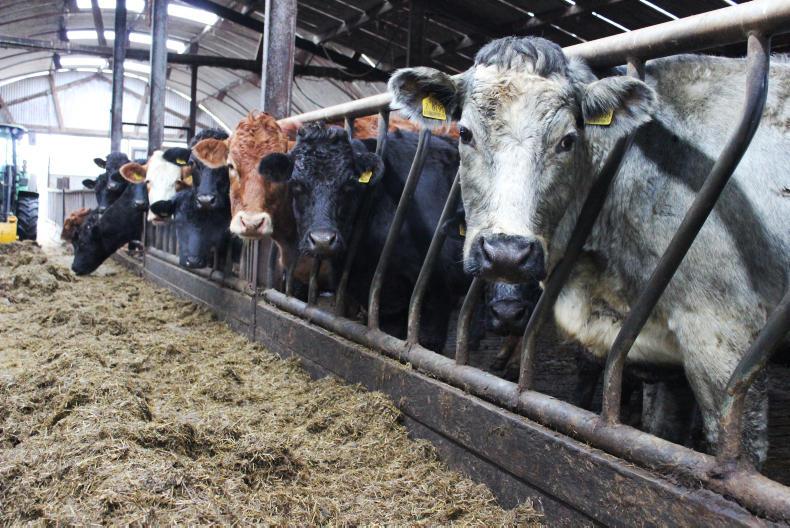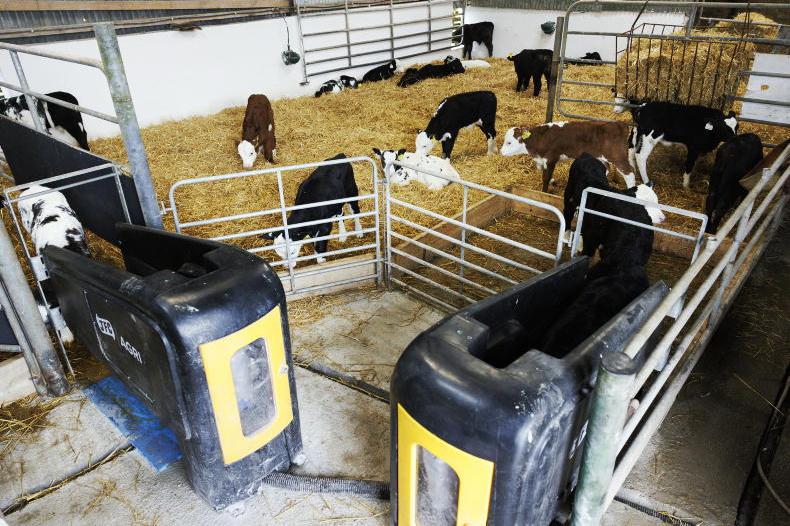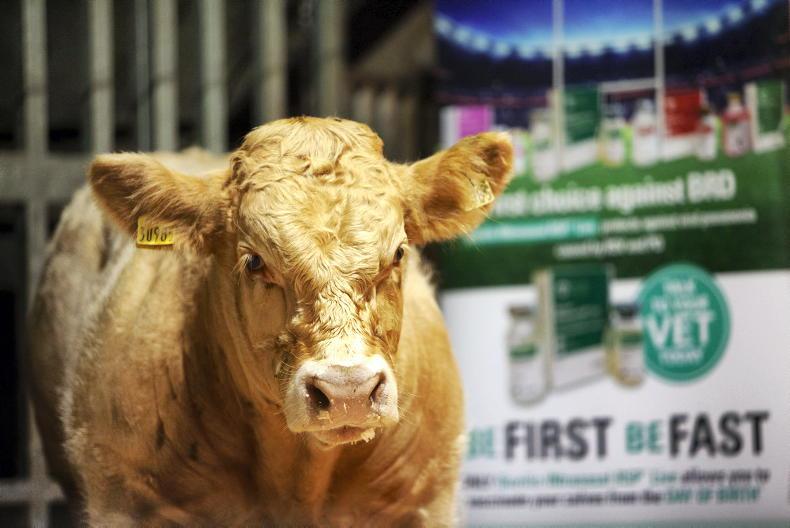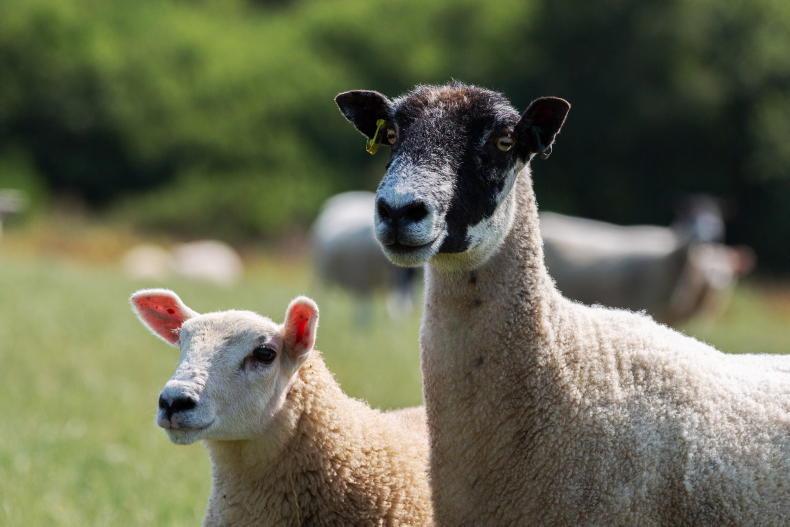Parts of the country experienced heavy rainfall on Sunday and with more rain forecasted for the week ahead, ground conditions will quickly deteriorate where cattle are grazing on heavier land.
If rainfall becomes more persistent, farmers working on heavier land may well look to start housing cattle for the winter.
When housing cattle, as far as possible, avoid housing all animals on the same day, as this increases stress and the risks of respiratory problems.
Planning ahead can prevent the situation where all animals are housed on the same day, or when they are wet.
If you know that housing cattle is inevitable, be pro-active and start housing animals before you run out of grass.
Do not hold every animal outside until the last blade of grass has been grazed off.
Outlined are five tips to manage cattle when housing for the winter period.
1 Sell off unproductive cows
Before housing animals, it is a good idea to offload surplus stock, cull cows and under-performing cattle.
Scanning cows will identify barren animals, which should be offloaded if grazing conditions continue to deteriorate and housing is coming close.
Cows can be accurately scanned from 35 to 40 days after service.
For March- and April-calving herds, breeding should have finished by now.
Identifying these animals means they can be sold as soon as possible, easing grazing pressure and reducing the stocking density in sheds.
2 House strong stores then cows
If cattle are likely to be housed within the next one to two weeks, be pro-active and start housing stronger cattle over the coming days when you can target drier days to bring animals inside.
By housing cattle in phases, it reduces the stress on animals and the process is much easier to manage for herd owners.
Finishing cattle will struggle to gain weight on wet autumn grass, yet they will damage swards when unsettled by rain.
Once housed, these animals will respond positively to good-quality silage and concentrates.
Also, heavier cattle may be carriers of respiratory diseases such as IBR, which they shed once stressed.
Therefore, housing heavy stores prior to young stock allows them to settle and lowers the risk of animals shedding respiratory diseases.
Target cows with calves next.
Make sure calves have access to a creep area with clean, dry bedding.
Strong spring-born calves can be weaned by housing the cow and leaving the calf at grass for another week to help reduce stress and disease risks.
3 Clip cattle
By housing cattle in phases, you will have more time to clip animals before housing.
Clipping is an effective way to prevent animals over-heating in sheds, which again makes them more susceptible to respiratory problems.
Clip the head and back of the animal, shaving an area about four to six inches either side of the spine.
4 Air flow
Make sure there is good air-flow in sheds to remove stale air and excess heat.
Cobwebs on sheeted tin and roof trusses are an indication of poor air flow in sheds, so you will need to take action quickly to remedy this situation.
By housing in stages, you can spread cattle out more.
Once cattle are settled inside, you can start to tighten up pens.
5 Silage and concentrates
Once housed, feed calves 1kg to 2kg/day of concentrates over the first week, regardless of silage quality.
Feeding concentrates will allow you to see animals coming forward to eat every day.
Animals which are slow to come forward may be in the early stages of pneumonia.
These animals should be isolated for treatment and monitoring.
Once calves have settled indoors, alter concentrate levels to suit silage quality.
Read more
Weekly weather: rain to return after September sunshine
Calls for immediate bonus increase as protesters step down
Parts of the country experienced heavy rainfall on Sunday and with more rain forecasted for the week ahead, ground conditions will quickly deteriorate where cattle are grazing on heavier land.
If rainfall becomes more persistent, farmers working on heavier land may well look to start housing cattle for the winter.
When housing cattle, as far as possible, avoid housing all animals on the same day, as this increases stress and the risks of respiratory problems.
Planning ahead can prevent the situation where all animals are housed on the same day, or when they are wet.
If you know that housing cattle is inevitable, be pro-active and start housing animals before you run out of grass.
Do not hold every animal outside until the last blade of grass has been grazed off.
Outlined are five tips to manage cattle when housing for the winter period.
1 Sell off unproductive cows
Before housing animals, it is a good idea to offload surplus stock, cull cows and under-performing cattle.
Scanning cows will identify barren animals, which should be offloaded if grazing conditions continue to deteriorate and housing is coming close.
Cows can be accurately scanned from 35 to 40 days after service.
For March- and April-calving herds, breeding should have finished by now.
Identifying these animals means they can be sold as soon as possible, easing grazing pressure and reducing the stocking density in sheds.
2 House strong stores then cows
If cattle are likely to be housed within the next one to two weeks, be pro-active and start housing stronger cattle over the coming days when you can target drier days to bring animals inside.
By housing cattle in phases, it reduces the stress on animals and the process is much easier to manage for herd owners.
Finishing cattle will struggle to gain weight on wet autumn grass, yet they will damage swards when unsettled by rain.
Once housed, these animals will respond positively to good-quality silage and concentrates.
Also, heavier cattle may be carriers of respiratory diseases such as IBR, which they shed once stressed.
Therefore, housing heavy stores prior to young stock allows them to settle and lowers the risk of animals shedding respiratory diseases.
Target cows with calves next.
Make sure calves have access to a creep area with clean, dry bedding.
Strong spring-born calves can be weaned by housing the cow and leaving the calf at grass for another week to help reduce stress and disease risks.
3 Clip cattle
By housing cattle in phases, you will have more time to clip animals before housing.
Clipping is an effective way to prevent animals over-heating in sheds, which again makes them more susceptible to respiratory problems.
Clip the head and back of the animal, shaving an area about four to six inches either side of the spine.
4 Air flow
Make sure there is good air-flow in sheds to remove stale air and excess heat.
Cobwebs on sheeted tin and roof trusses are an indication of poor air flow in sheds, so you will need to take action quickly to remedy this situation.
By housing in stages, you can spread cattle out more.
Once cattle are settled inside, you can start to tighten up pens.
5 Silage and concentrates
Once housed, feed calves 1kg to 2kg/day of concentrates over the first week, regardless of silage quality.
Feeding concentrates will allow you to see animals coming forward to eat every day.
Animals which are slow to come forward may be in the early stages of pneumonia.
These animals should be isolated for treatment and monitoring.
Once calves have settled indoors, alter concentrate levels to suit silage quality.
Read more
Weekly weather: rain to return after September sunshine
Calls for immediate bonus increase as protesters step down










SHARING OPTIONS